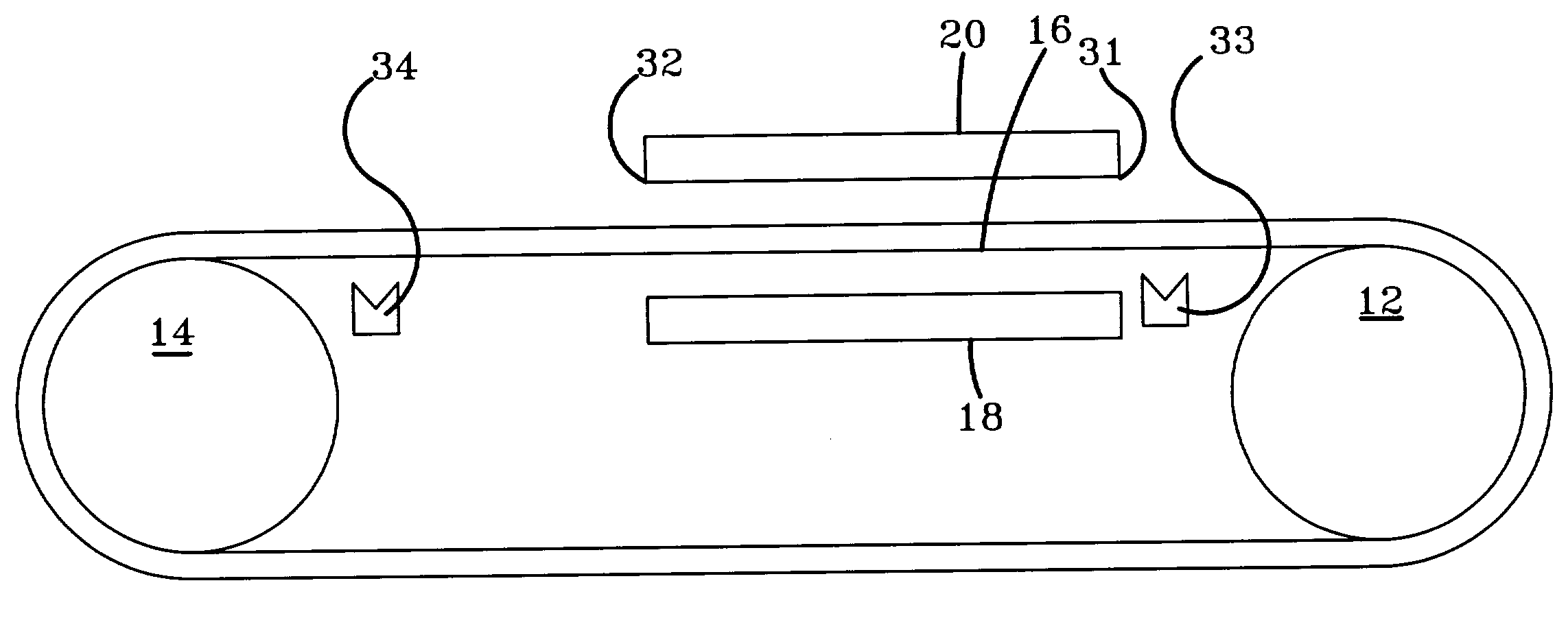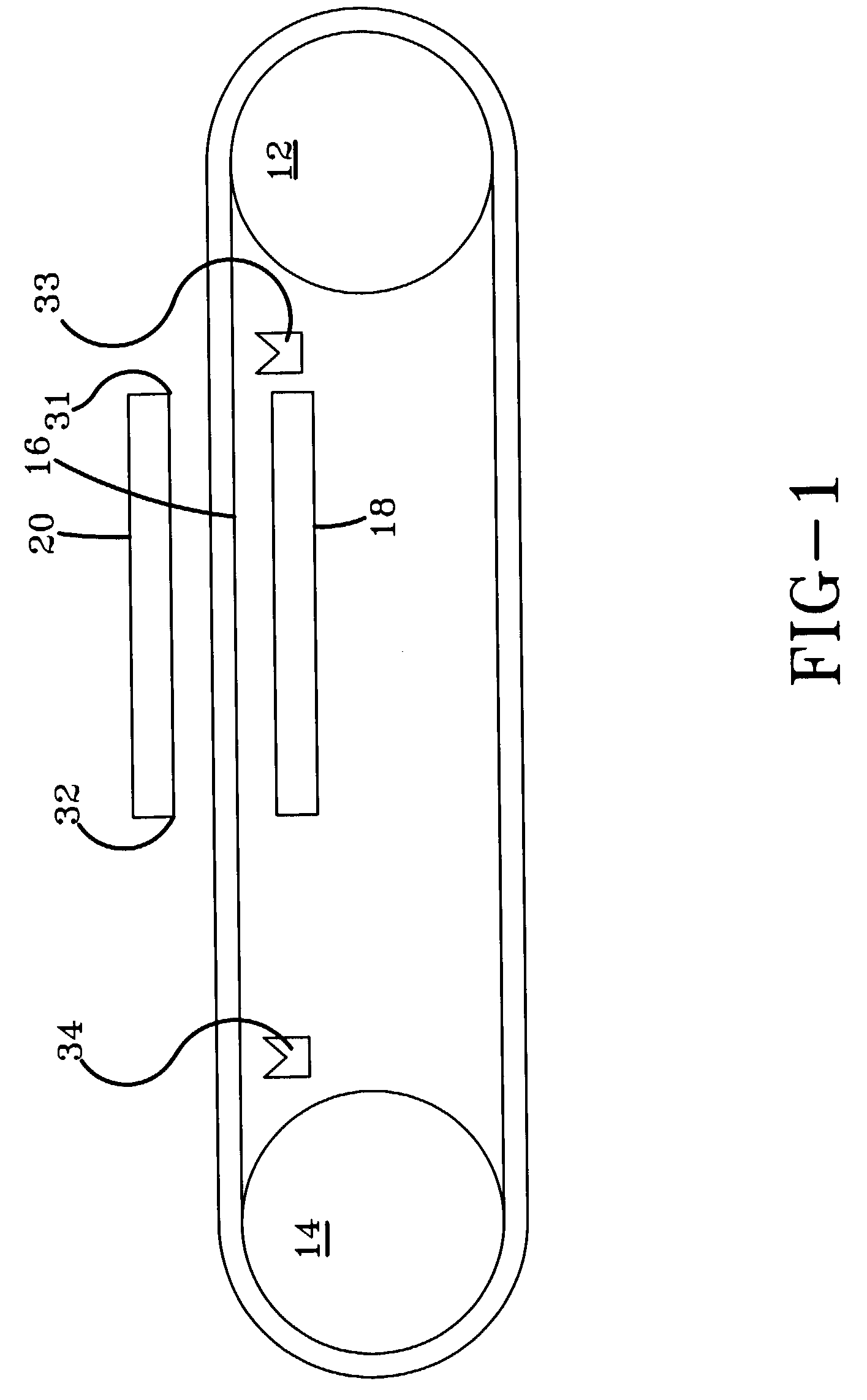Dynamic pitch correction in press cured power transmission belts
a technology of power transmission belts and dynamic pitch correction, which is applied in the direction of driving belts, belts/chains/gearrings, domestic applications, etc., can solve the problems of excessive pitch error, difficult to accurately measure the exact circumference of the belt slab, and cumulative pitch and tooth position errors, etc., to achieve small compensating error and large unacceptable tooth pitch errors
- Summary
- Abstract
- Description
- Claims
- Application Information
AI Technical Summary
Benefits of technology
Problems solved by technology
Method used
Image
Examples
Embodiment Construction
[0078] Referring now to the drawings wherein the showings are for purposes of illustrating a preferred embodiment of the invention only and not for purposes of limiting the same, FIG. 1 shows a schematic view of the innovative method and manufacturing machine according to the invention.
[0079] With continuing reference to FIG. 1, the manufacturing machine 10 includes a first cylinder 12 and a second cylinder 14. In the preferred embodiment, the first cylinder 12 is fixed and the second cylinder 14 is movable, so that the distance between the centers of the two cylinders can vary, thus, increasing or decreasing the tension on the belt 16 which is wrapped around the cylinders 12, 14. However, in other, currently unpreferred embodiments, the centers of each of the cylinders 12, 14 can move.
[0080] With reference to FIG. 2, a first mold half 18 is illustrated. With reference to FIG. 1, both the first mold half 18 and the second mold half 20 are illustrated relative to the other portions o...
PUM
| Property | Measurement | Unit |
|---|---|---|
| Length | aaaaa | aaaaa |
| Distance | aaaaa | aaaaa |
| Circumference | aaaaa | aaaaa |
Abstract
Description
Claims
Application Information
 Login to View More
Login to View More - R&D
- Intellectual Property
- Life Sciences
- Materials
- Tech Scout
- Unparalleled Data Quality
- Higher Quality Content
- 60% Fewer Hallucinations
Browse by: Latest US Patents, China's latest patents, Technical Efficacy Thesaurus, Application Domain, Technology Topic, Popular Technical Reports.
© 2025 PatSnap. All rights reserved.Legal|Privacy policy|Modern Slavery Act Transparency Statement|Sitemap|About US| Contact US: help@patsnap.com



